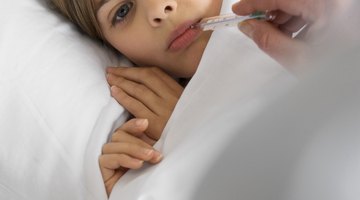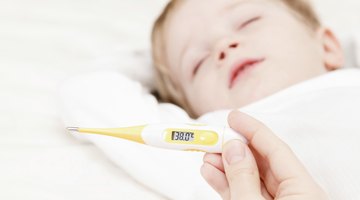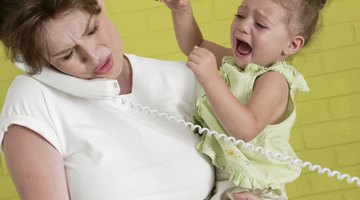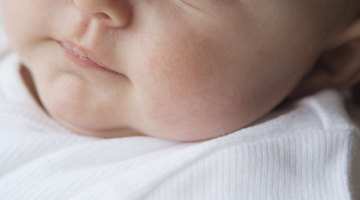Flushed cheeks in Toddlers
There are many reasons why a 2-year-old experiences hot cheeks when waking up. Because hot cheeks and an elevated temperature are sometimes a sign that something is wrong with your toddler, it is important to pay attention to your child’s behavior and any additional symptoms that occur upon awakening.
What to Look For
Observe your child after she awakes with hot cheeks. Check her temperature with a thermometer. If it reads over 100.4 degrees, your child has a fever. Look for lack of energy, unusual paleness, loss of appetite, extreme irritability or other noticeable changes in her appearance or behavior. Additional symptoms could include aches, red cheeks, ear pain, diarrhea, cough, an itchy rash on the extremities or trunk of the body or vomiting.
Causes

Normal Body Temperature for Toddlers
Learn More
According to the Babycenter website, everyone’s temperature elevates slightly in late afternoon and early evening, which is when toddler nap times and bedtimes typically are. Covering your toddler with a heavy blanket or keeping his room temperature too warm triggers overheating while sleeping, which contributes to hot cheeks upon awakening. Hot cheeks sometimes also are a sign that your child’s immune system is fighting off a condition such as teething or an illness, virus or infection.
Home Remedies
If your child appears to be happy and is not in any distress, it is OK to allow a slightly elevated temperature to go untreated. According to Laura Jana on the Parents website, allowing the fever to run without treatment sometimes helps your child’s body better fight off the condition or infection causing it. However, if your child is uncomfortable, you can ease her symptoms by cooling her off in a lukewarm bath and giving her a variety of fluids, such as:
- gelatin
- ice pops
- water
- rehydration drinks
Warning Signs

My Toddler Is Not Urinating As Much With a Fever
Learn More
Call your child’s pediatrician immediately if his fever goes higher than 102 degrees or is accompanied by a runny nose, body aches, chills, a sore throat and cough. These are classic symptoms of the H1N1 flu virus, which is particularly dangerous to young children. Go to the emergency room if your child experiences difficulty breathing, develops a purple bruise-like rash or if her skin begins to turn ashy or blue.











